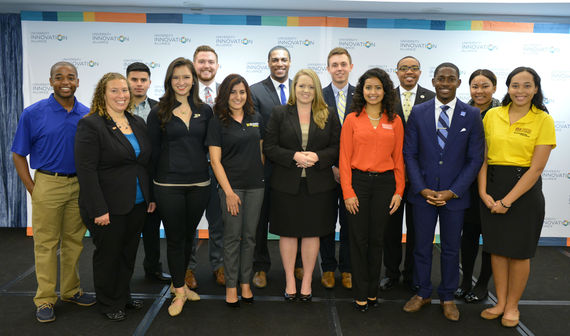Co-authored by Michael Crow, President, Arizona State University
The U.S. is facing substantial performance gaps within higher education. High-income students are seven times more likely to attain a college degree than low-income students, exacerbating income inequality. The country is projected to be three million college graduates short of what we need to fill expected jobs in 2016 if we are to retain our competitive edge in an increasingly global economy.
Many higher education institutions have made progress in discovering solutions to improve student access and success, including completion rates. But while it's the nature of research universities to experiment, solve problems, and discover new ideas, it's rare for them to share information and work collaboratively. As a result, many of these solutions have remained isolated within the institutions that developed them.
The challenges to the nation's social and economic health have become so great, however, that clearly it is time for universities to think differently and lead the way to improve student graduation rates.
That is why 11 large public research universities have come together with the support of six major grant-making organizations to form an alliance that represents a fundamental shift in the way universities operate. The University Innovation Alliance seeks to boost retention and completion rates for low-income, minority, and first-generation students. Its charter is to scale up proven ideas and break down barriers that have previously prevented innovative programs from being adopted on multiple university campuses.
Each UIA member has been individually recognized for approaches and interventions to serve more students with quality programs at sustainable costs, from online tools that help students chart a clear course toward graduation to initiatives that push counseling into the residence halls. UIA members have committed to developing formal mechanisms through which successful innovations are shared, assessed and scaled across higher education institutions across the land.
UIA institutional leaders will be working together to create a playbook that focuses on evidence-based solutions and ways to scale those solutions. Critical to this endeavor will be open and honest conversation around what's working and what's not. It will mean talking about failure, and sharing successes. The interventions these universities are considering range from common sense solutions to innovative, new experiments. But perhaps what's most ground-breaking is their commitment to collaboration and scale. These universities educate nearly 400,000 students and hold great promise for having a noticeable impact on the success of American college students.
For funders, the Alliance represents the best opportunity for effective interventions to be deployed on a national scale to impact the greatest number of students. Furthermore, each of the 11 universities has made its own commitment to help match the initial $5.7 million investment by the six funders to start this endeavor and achieve maximum impact.
The potential impact is significant. When student learning and success are placed at the forefront, everyone benefits. It is our hope that other colleges and universities adopt, adapt, and refine UIA's innovations; and that this work will inspire others to develop great solutions of their own and share them to benefit students across the entire socioeconomic spectrum.
